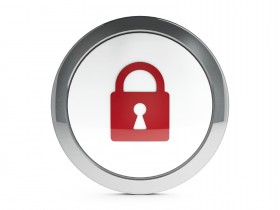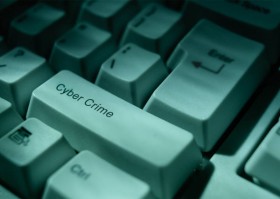A trip to the USA means some unusual books made their way onto the table last month.
The Map Thief by Michael Blanding. An esteemed dealer who becomes an obsessive thief of rare maps. A must for any map collector but also a good read for those who like intrigue.
The Guest Cat by Takashi Hiraide. A delightful story set in Japan with a very good insight in to Japanese culture and life.
Loving Frank by Nancy Horan. Frank Lloyd was an inspirational architect and very naughty. Not a new book but new to us.
Zingerman’s Guide to Good Eating by Ari Weinzweig. Zingermans is an institution in Ann Arbor MI and this wonderful book is by one of its founders.
Adventures in Stationery: a journey through your pencil case by James Ward. They say the history of stationery is the history of civilisation. How true. This book also gives a history of some of the key inventors in the world of stationery such as Mr Biro.
The Innovators: how a group of hackers, geniuses and geeks created a digital revolution by Walter Isaacson. Any new book by Isaacson is a must read and this is no exception for those interested in the evolution of the information age.
What’s on your bedside table (conventional or as an e-book)?
Tags: Ari Weinzweig, Books of note, Frank Lloyd, James Ward, Michael Blanding, Nancy Horan, Takashi Hiraide, Walter Isaacson, Zingermans
Here are the articles and blogs which caught our attention in October.

What have we missed. What did you read which caught you eye?
Tags: bcc, Clive Thomson, cyber crime, cybercrime, Debrett's, email culture, email etiquette, email overload, Michael Einstein, Ponemon
Who is the weakest link in the fight against cyber crime? It is us the user. Click here to listen to how we leak data ever day through careless use of email. Without thinking we have either opened or sent an email which opens the door to cyber crime be it hacking, stealing our identity (phishing) and giving away confidential data.
There are many ways we can manage our email behaviour to reduce the risk to ourselves and our organisation of a breach of confidentiality and improve email related security. Here are our top five tips.

Email cyber crime
Education is the key to reducing the risk of an email predicated cyber attack. For a free five minute review of your email security behaviour and how you can improve it either call Mesmo Consultancy on 01202 434340 or email us now to book an appointment.
Tags: bcc, cyber crime, email cyber crime, email security, Mesmo Consultancy
According to recent research from Centrify (providers of identity management services) forgetting your password is more annoying than spam email.
The cost of cyber crime has doubled in the past four years according to recent research from Ponemon. Strong passwords is one way to prevent prying eyes but  just how easy is it to construct one? Also is it good to keep changing your password?
just how easy is it to construct one? Also is it good to keep changing your password?
Back in 2010 Microsoft found that changing security words often cost billions of pounds as people wasted time constructing and memorising them and then forgetting them and worse leaving them unsecured.
Centrify now estimate that poor password management costs around £130,500 per year for a business of about 500 users. How they arrive at that figure is not clear. What is clear is that we really are not good at the basics of identity management. The top five mistakes being:
1. Always use the same password whenever possible.
2. Rotate through a variety of similar passwords.
3. Keep a written password in a master book of passwords.
4. Use personal information in a password.
5. Avoid using complicated symbols or combining upper and lower case.
Security management behaviour can easily be improved although it often takes a cyber attack (personal or corporate) as a wake up call. User education is key to reducing cyber crime. Here are our five top tips.
1. Avoid the traps identified above.
2. Second, use strong passwords which are really very easy to construct and remember. Take a phrase and then build a password from the first letter of each word and turn some into capitals and numerics, for example make your ‘i’ and ‘1’ and add a couple of symbols.
3. For those with multiple accounts consider using some form of password management software such as LastPass or Keepass.
4. Where you have a choice adopt devices which have more than just password protection for example finger and retina recognition.
5. Be vigilant about those emails which grab your attention telling you your accounts has been hacked. Delete them without even opening them as they are almost certainly from spammers attempting some form of identity theft.
Email is often the open backdoor for a cyber attack. For more about how we help our clients to reduce the risk of email cyber crime through email best practice contact us now.
Tags: Centrify, cyber crime, email best practice, email cyber crime, KeePass, LastPass, Password Management, Ponemon, Spam, Strong Password
Many, business people receive 100 (or more) messages a day and spend 2 to 3 hours a day on email related activities, consuming 20 to 30% of their business day. Not surprisingly, many complain of suffering from email overload
Email, with its myriad of features, functions, and capabilities, combined with its high volumes and constant interruptions, has become one of the most frequently used yet continually challenging business applications for today’s workers to navigate.
So, what is the solution to managing email overload issues? My research has found that the key strategies to deal with email overload fall into three broad approaches: organizational, technical, and behavioral.
1) Organizational approaches
Organizational approaches to reducing email overload incorporate the use of acceptable use policies as a way to set organization-wide rules for the appropriate, and inappropriate, use of email. These approaches are also referred to as email etiquette or netiquette, and focus on teaching people to use email more appropriately.
These can be employed differently depending upon the organization, ranging from being enforced as formalized policies, communicated as strongly suggested guidelines, or expressed as cultural norms of expected behavior. They establish a common set of values, expectations, and behaviors around the use of email, and work at the macro level, reducing the email overload burden for everyone.
2) Technical approaches
Technical approaches to reducing email overload leverage specific features and functionality in the email system itself as ways to reduce email overload. This approach has traditionally been the primary focus area for most email training programs with the goal on improving an individual’s fluency in the email system and thereby allowing people to use email more efficiently.
Research has found that there is often little formalized training on the use of email, as most people are (incorrectly) presumed to already be email proficient. Even those who deem themselves email savvy are often only familiar with a small fraction of their email system’s features and capabilities. A technical approach can yield significant improvements in individual email skills, resulting in large reductions in email overload.
For Outlook users, click here to check how savvy you are with your email software.
3) Behavioral approaches
Behavioral approaches to reducing email overload focus on improving the knowledge, actions, and behavior of individuals. This approach incorporates the areas of media competencies and email processing (triage) techniques and focus on teaching people to use email more effectively.
Media competencies include topics such as when email is an appropriate (or inappropriate) form of communication, how to build high-quality email subject lines, and writing structured message bodies. email processing (triage) encompasses focuses on strategies on how to best scan, analyze, and organize your messages. Behavioral approaches, the way you interact with email, are critical to reducing email overload.
Research has found that you must focus on improving skills across all three of these areas (Organizational, Technical, and Behavioral) in order to make the greatest improvements in your email skills and the largest reduction in email overload.
About the Author
Dr. Michael Einstein is a full-time business technology professional for a large multi-national corporation.
His doctoral dissertation was on the intersection of email processing skills, email overload, and technology training. He is very active in email overload research. For more information see his recently launched website which contains a wealth of resources to help others learn to better manage their inboxes and reduce their information and email overload levels.
Tags: Email behaviour, email culture, Michael Einstein, Outlook, Reduce email overload